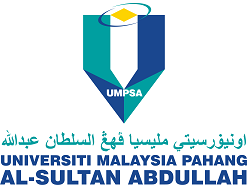Factors Influencing the use of MRT service in Klang Valley, Malaysia
DOI:
https://doi.org/10.15282/construction.v3i2.9629Keywords:
MRT usage, mode shift, influential factors, Malaysia, Rasch ModelAbstract
Mass Rapid Transit, also known as MRT, was introduced by the Malaysian government as an alternative transport mode to address issues related to congestion and road traffic crashes as well as improve public transportation connectivity. Alternative transport modes may not be successful in attracting road users to shift their mode from private if the service provided fails to meet the users’ expectations. Therefore, there is a need to investigate the factors that influence the modal shift to MRT, which could potentially increase its ridership and reduce congestion as well as risk on the road. Thus, this study aimed to identify the factors influencing the use of MRT service in Klang Valley. The factors influencing the users’ decision to modal shift from private vehicles to MRT upon completion of the MRT SBK line were measured through a face-to-face questionnaire survey comprising three sections asking for the respondents’ demographic information, their trip profile, and their MRT usage experience. Based on the MRT usage experience, the respondents were given the choice of answers based on the 5-point Likert scale to rate the 19 factor-related statements indicating the factors that encourage the users to use MRT. Using exploratory factor analysis, four dimensions were identified to explain 19 statements: service quality, travel satisfaction, travel value, and connecting facility. Further analysis using the Rasch model was carried out to measure the reliability and validity of the 19 statements indicating the factors influencing the use of MRT based on the 500 respondents received. Analysis of the results indicated that the most influential factors that encourage people to shift their mode of transportation from private to MRT include the convenience of MRT service, cost, and time. Findings of this study support the idea that MRT is a good transport choice with minimal exposure to road crashes. Results from the reliability and validity test also suggested increasing the diversity of respondents since the value of respondents’ separation is only slightly good enough.
Downloads
Downloads
Published
Issue
Section
License
Copyright (c) 2023 The Author(s)

This work is licensed under a Creative Commons Attribution-NonCommercial 4.0 International License.




